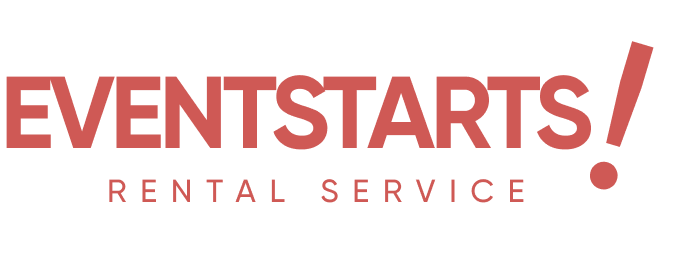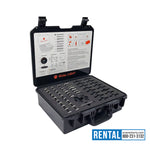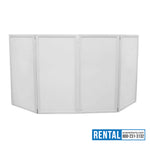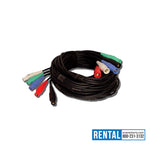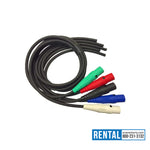You have no items in your shopping cart.

When organizing a live event—whether it’s a corporate conference, concert, trade show, or product launch—the stage isn’t just a physical platform. It’s a powerful visual representation of your brand, setting the tone for the entire experience. The stage is where performances happen, where speakers engage with the audience, and where key messages are delivered. That’s why investing in Custom Stage Designs is essential for creating an impactful and memorable event. A custom stage doesn’t just serve its practical function; it serves as a canvas for your brand, reflecting your identity, message, and values. In this article, we explore the significance of Custom Stage Designs, how they can elevate your event’s atmosphere, and the steps involved in creating a stage that truly represents your brand.
The Importance of Custom Stage Designs
Custom stage designs are tailored to the specific needs of an event, offering a unique opportunity to integrate branding, aesthetics, and functionality. Unlike generic stages, custom-designed stages are crafted to fit the theme, objectives, and audience of the event. Whether you’re hosting a live performance, a corporate seminar, or an award ceremony, the stage plays a central role in the experience. Here's why Custom Stage Designs are so important:
1. Brand Representation
A well-designed stage serves as an extension of your brand identity. Custom Stage Designs allow you to incorporate your company’s logo, colors, fonts, and other visual elements into the stage setup. This reinforces your brand's messaging and ensures that your event is consistent with your overall branding strategy. A stage that aligns with your brand’s values and aesthetics can help build a deeper connection with your audience and leave a lasting impression.
For instance, a tech company hosting a product launch can design a futuristic, sleek stage with high-tech features and lighting to showcase their innovative spirit. Similarly, a non-profit organization can design a stage with natural, earthy elements that reflect their commitment to environmental sustainability. A custom stage is more than just a backdrop—it’s a key player in telling your brand story.
2. Unique Event Experience
With Custom Stage Designs, you can create a one-of-a-kind experience for your audience. Events today are all about creating memorable experiences that resonate with attendees. By designing a stage that reflects the event's theme and mood, you can engage your audience in a more immersive and visually stimulating way. A custom-designed stage can evoke emotions, generate excitement, and enhance the overall experience of your event.
A unique stage can also serve as a conversation starter, encouraging attendees to share photos and videos on social media, increasing your brand’s visibility. The more striking and memorable the design, the more likely it is to leave a lasting impact on your audience.
3. Setting the Tone and Atmosphere
The design of the stage plays a critical role in setting the tone for the entire event. Whether it’s a high-energy concert or a formal corporate event, the stage design communicates the energy and vibe of the occasion. Custom Stage Designs can be adjusted to fit the mood, ensuring that the event atmosphere is just right.
For example, an outdoor music festival might feature a bold, large-scale stage with vibrant colors, dynamic lighting, and video screens that reflect the energy of the music and crowd. On the other hand, a corporate seminar might have a minimalist design, using clean lines and neutral tones to create a professional and sophisticated environment.
4. Highlighting Key Moments
The stage is often the focal point of the event, and Custom Stage Designs allow you to highlight specific moments that matter most. Whether it’s a keynote speech, an awards ceremony, or a product reveal, your custom stage can be designed to spotlight these important segments. You can integrate features like dynamic lighting, video projections, and unique architectural elements to draw attention to the key moments that you want to emphasize.
5. Practical Functionality
While aesthetics are important, the functionality of the stage is equally critical. Custom Stage Designs are not just about looks—they need to be practical and safe for the performers, speakers, and audience. A custom stage can be built to accommodate specific technical requirements, such as AV equipment, lighting rigs, or staging for live performers. By working with professional designers, you can ensure that the stage is functional, safe, and equipped with all the necessary components for a smooth-running event.
Elements of Custom Stage Designs
Creating a truly impactful custom stage requires attention to detail. There are various elements involved in designing a stage that is not only functional but also visually stunning and aligned with your brand. Here are some of the key components to consider:
1. Stage Layout and Dimensions
The first step in Custom Stage Designs is determining the layout and dimensions. The stage needs to be the right size to accommodate the event's speakers, performers, and audience, while also allowing for ease of movement and interaction. Stage layouts should be designed with functionality in mind, ensuring that performers or speakers have a clear line of sight to the audience and vice versa.
The layout should also consider the technical needs of the event, such as the placement of microphones, sound systems, and lighting rigs. The stage dimensions should align with the size of the venue and the nature of the event, ensuring that the stage is neither too small nor too overwhelming for the space.
2. Branding Integration
A custom-designed stage is a perfect opportunity to showcase your brand’s identity. This can be achieved by integrating your logo, colors, and typography into the stage design. Whether it’s a prominent display at the center of the stage or subtle details incorporated into the backdrop, branding elements should be seamlessly woven into the design.
For example, a backdrop could be designed using your brand’s colors, and branded panels could be strategically placed around the stage. Additionally, large-scale digital displays can be used to project your logo, videos, or live social media feeds, keeping the brand front and center throughout the event.
3. Lighting and Audio-Visual Elements
Lighting is one of the most crucial elements of Custom Stage Designs. It not only helps set the mood of the event but also enhances the stage's visual appeal. Strategic lighting can highlight the speakers, performers, or specific elements of the set. Color-changing LED lights, spotlights, and ambient lighting all contribute to the atmosphere of the event, transforming the stage into a dynamic space that evolves with the event.
Audio-visual elements also play a vital role in custom stage design. Projection screens, video walls, and LED displays can be used to showcase multimedia content, such as presentations, video clips, or live feeds. These elements not only enhance the visual experience but also engage the audience, making the event more interactive and immersive.
4. Materials and Textures
The materials used in Custom Stage Designs can greatly influence the look and feel of the stage. For example, using sleek, modern materials like glass, metal, and polished wood can create a sophisticated, high-tech vibe, while more rustic materials like reclaimed wood or fabric can give a stage a warmer, more organic feel.
Textures also play a role in enhancing the stage design. Smooth, reflective surfaces can create a contemporary look, while textured finishes add depth and dimension to the stage. The choice of materials and textures should align with the overall theme of the event and the brand’s identity.
5. Accessibility and Safety
When designing a custom stage, accessibility is crucial. Your stage should be designed to accommodate all attendees, including those with disabilities. This means providing ramps, wide entrances, and ensuring that the stage setup complies with safety regulations. Custom Stage Designs should also include features like guardrails and non-slip surfaces to ensure the safety of performers and speakers.
How to Work with a Custom Stage Design Professional
To create an effective Custom Stage Design, you’ll need to collaborate with a professional stage designer or production company. Here’s how to work with a professional to ensure your vision comes to life:
1. Communicate Your Brand Vision
The first step in the design process is to communicate your brand’s vision, values, and the overall mood you want to convey at the event. Share any specific ideas or elements you want incorporated, such as colors, logos, or themes. The more details you provide, the easier it will be for the designer to create a custom stage that aligns with your objectives.
2. Discuss Practical Requirements
Be sure to discuss the practical aspects of the stage design, such as its size, layout, and technical requirements. For example, if your event involves a live performance, make sure the stage can support the necessary sound and lighting equipment. The designer will work with you to create a stage that meets both aesthetic and functional needs.
3. Review and Approve the Design
Once the designer has created a concept, review the design to ensure it aligns with your expectations. This is the time to make adjustments and refine the details. It’s important to ensure that the design is feasible and can be executed within the event timeline and budget.
4. Finalize Logistics
Once the design is finalized, work with the designer to coordinate the logistics of the stage setup and breakdown. Ensure that the installation and removal of the stage are carefully planned to minimize disruption to the event schedule.
Conclusion
Custom Stage Designs offer an unparalleled opportunity to showcase your brand identity and create a memorable experience for your audience. Whether you're hosting a corporate event, concert, trade show, or product launch, a custom stage can elevate the atmosphere, highlight key moments, and strengthen your brand presence. By collaborating with professional stage designers, you can bring your vision to life while ensuring that the stage meets both aesthetic and functional requirements. A custom stage isn’t just a platform for your event—it’s a powerful visual representation of your brand that enhances the overall experience and leaves a lasting impression.
